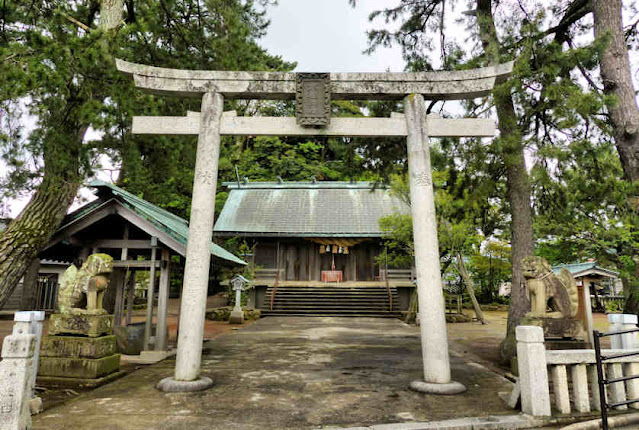Thursday, October 2, 2025
Tamawakasu Shrine Dogo
Saturday, August 16, 2025
Kappa Sightseeing Boat Oki Islands
The Kappa Sightseeing Boat operates three times a day for a one-hour-long scenic tour around the historic port area of Saigo on Dogo Island , Okinoshima, in the Sea of Japan off the north coast of mainland Shimane.
Some of the geologic features of the coast are pointed out by the guide, though the commentary is only in Japanese.
You may also catch sight of one of the huge car ferries or the high-speed passenger ferry coming or going.
Often translated into English as “water imp”, this green, scaly creature with a beak and turtle-like shell is known throughout Japan and is known for drowning horses and children. It really likes cucumber, so kappazushi, a kind of sushi made with cucumbers, is often left as offerings to appease it. At this point the guide sings a local folk song.
After turning around the boat heads back and then takes the narrow channel that cuts through the middle of the old town. In some ways this is the most interesting part as the side by side houses literally come right down to the waters edge, with the older houses still with small jetties or steps down to the water. As you get closer to the port itself the sides of the river begin to fill with fishing boats.
Being an island, fishing has always been a major preoccupation with the inhabitants, but in earlier times the whole channel would have been a hive of activity because Saigo was a major trading port.
Though much is made of the great roads built in the Edo period like the Tokaido or the Nakasendo, along which travelled the great entourages of daimyos travelling to Edo or the millions of pilgrims heading to Ise, it is worth remembering that Japan was basically a maritime nation, and the coasts and waterways carried much of the trade and communication.
Saigo Port was a stopping point on the Kitamaebune, a major trade route that ran from Hokkaido and the far north down the Japan Sea coast and then round into the Inland Sea to reach Osaka, the trading capital of the country. This was a safer and easier route than the shorter Pacific coast route, so this channel would have been filled with boats tying up, cargoes being tran-shipped, and supplies being taken onboard, and though not often mentioned, like ports everywhere in the world , there would have been brisk business for “female companionship”.
Wednesday, July 2, 2025
Suijin Shrine Saigo
Monday, May 11, 2020
Dangyo Shrine & Waterfalls
Deep in the forested mountains of the interior of Dogo, the largest of the Oki Islands, are Dangyo Shrine and its pair of waterfalls. Just outside the torii are a pair of huge, ancient trees. The story is that when Izumo Taisha was being rebuilt the shrine was ordered to supply any such trees for timbers for the construction. The local people moved the torii forward some meters so that the trees then fell outside the shrine grounds and so were spared the felling.
There are two waterfalls here. The smaller is considered female and the larger male. With Japan's obsession with ranking, the waters here are ranked one of the 100 Best Waters of Japan. The water from the female waterfall is considered "winners" water, and is drunk by competitors in human nad bull sumo tournaments.
a couple of small shrines are inside the overhang over which the male waterfall cascades. The male kami here is Oyamakui, an Izumo kami who is famously enshrined at Hie Taisha below Enryakuji. The female kami is Seoritsuhime, not a well known kami but said to be the kami of waterfalls, rapids etc.
Bronze mirrors and other artifacts have been excavated here suggesting that this has been a sacred site since prehistory. Well worth the effort needed to visit, as are all the Oki Islands.
Saturday, February 22, 2020
Kabura-Sugi The Turnip Tree of Dogo
This unusual tree is called Kabura Sugi and it can be found on Dogo, the largest of the Oki Islands in the Japan Sea off the coast of Shimane. Kabura is a kind of Japanese turnip-like vegetable with a round body with numerous stems rising vertically.
This particular tree has 6 trunks and rises to about 42 meters. It is estimated to be about 600 years old.
I believe it a species of cypress called Urasugi that is found on the slopes of the mountains on the island. It's more famous cousin found nearby is the Boob Cedar.

































































